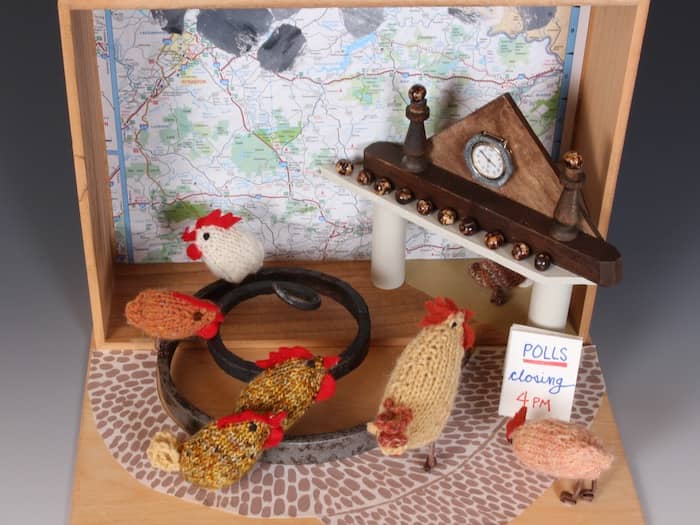A couple weeks ago, I phoned several dozen strangers in New Hampshire. Joining with other volunteers on Zoom, I tapped into the enthusiasm and youthful energy of the organizer. Then I logged in to the phone bank on my computer.
Frankly, I would rather have spent the evening knitting. I’m beginning to think I may not finish the poncho that’s on my needles before winter’s end.Why did I put down my knitting and pick up the phone? Because I can’t sit by doing nothing while our electoral system is sabotaged. In this case it was a gerrymandered Congressional map doing the damage.
It wasn’t as bad as I feared. When one of the people I spoke with agreed to ask his state rep to reject the map, I could hardly contain my surprise. My adrenalin was running high as I patched the constituent through to his state rep’s phone so he could leave a message. The Granite Stater was happy to help and glad to make his voice hear.
I had just given him an opportunity to speak up!
The map proposed by the New Hampshire redistricting committee drastically redraws the boundaries of the state’s two Congressional districts. It moves 25% of the state’s population from one district to another. That’s no minor line adjustment. As Rep. Max Abramson, R-Seabrook put it, “It looks unfair. It looks like somebody was drawing a line of spaghetti around the state.” Quoted by WMUR Channel 9.
Instead of two districts that can be fairly contested and won by either a Democrat or a Republican, the map virtually guarantees that one U.S. House district will be won by a Republican. Currently, the state’s two U.S. House seats are held by Democrats.
When the maps are so distorted, it barely matters how many people turn out to vote. The result is predetermined.
Unfortunately, the N.H. House approved the gerrymandered map. It now goes to the N.H. Senate. If it passes the Senate, it will go to Governor Sununu for signature. He’s said he won’t approve an unfair map, but it will take a lot of public pressure to keep it from being adopted. Protecting our electoral system from distortion and sabotage is going to take a lot of effort.
It’s like knitting a poncho or a sweater. Those first few rows don’t look like much, but over time, they slowly build. Along the way there are exciting moments, like when a voter says “yes, I’ll call my state rep about the map.” Those are like the cable twists on a sweater.
Eventually you get to turn a heel, divide the stitches for fingers, or add a sleeve. (Well, not on a poncho, but you know what I mean.) Those markers are progress points. I love seeing the knitting grow.
You can share this work and tap into some grassroots organizing energy. I connected to the New Hampshire phone bank through Lean Left Vermont. They have a briefing sheet on ways to volunteer in several states where voting rights are threatened.
You can help urge passage on the Freedom to Vote: John R. Lewis Act in Congress by volunteering with Common Cause. They are calling constituents in key states, connecting them with their U.S. Senators to urge them to pass this key voting rights bill.
And when you need a break, you can relax with your knitting. Maybe I will finish that poncho in time to wear it this winter, after all.


